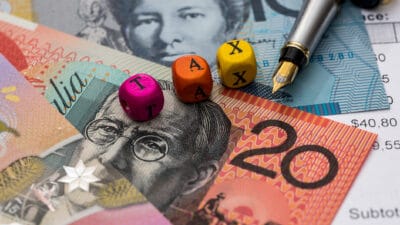We spend a lot of time, as investors, obsessing over our portfolios.
The big winners. The big losers. The ones that got away.
It's natural.
It can even be healthy (well, the 'keeping score' part, not the obsessing part).
Like it or not, this investing game has a very stark, unforgiving scorecard.
Either you're making money, or you're not.
Either you're beating the market, or you're not.
There's nowhere to hide.
(Actually, there are plenty of places to hide, for the dishonest. There is no shortage of underperforming fund managers and investment advisers who simply ignore their past failures, hide them, or simply rebrand. If you're taking advice, ask to see the whole truth!)
But, if you're honest — and you really want to invest well — the scoreboard is the brutal truth.
I'm pleased to say that the service I run, Motley Fool Share Advisor, is currently showing an average return, per recommendation, of 60.5%, compared to 39.6% for the All Ordinaries Index (ASX: XAO) (both including dividends) since inception in 2011.
That's every recommendation. Ever.
The great, the good, the ordinary and the terrible.
Not just over an arbitrary time frame.
Not just some of our recommendations.
Every stock, ever recommended.
Individually, there have been some big winners and some big losers.
And, by the way, our members get to see all of that information, in all its glory, on the site.
We hide nothing.
Still, a scorecard can be, if not misleading, not quite the full story.
Here's an example:
One of my recommendations is up 15% since 2016.
The market is up 60%.
So, we've made money, but lost to the index.
Not ideal.
Still, those numbers hide an important lesson.
The company is Virtus Health Ltd (ASX: VRT), the assisted reproduction (IVF) provider.
See, at one point, our Virtus recommendation, with a cost basis of $5.39, had fallen to $1.56 — a plunge of more than 70%.
That was in the depths of the COVID market crash.
Since then?
The shares are trading at $6.13 at the time of writing — close enough to four times their price of just 11 short months ago.
That 300% gain won't show up anywhere, of course.
And I'm not suggesting it should — after all, our cost base is $5.39, not $1.56.
But here's the thing: plenty of people were selling at $1.56 in March. Plenty sold for $2.00 and $2.50 either side of that low, too.
No, I'm not doing victory laps. We're up, but still lagging the market.
But I am mindful that it could have been a whole lot worse. We could have given in to the gloom. We could have sold, in sadness and frustration.
And, if we had, we would have missed out on the almost-300% gain that we earned just by refusing to let the market call the tune.
(I should add, too, that while we didn't pick the very bottom of the share price journey, we did re-recommend Virtus to our members at $2.90 in April. Taken together, our Virtus position is ahead of the market. But that's not my point.)
So, while we should all focus on the net result from our investments (and time will tell whether we simply overpaid for Virtus the first time around), it's important that we sometimes break down the components of our results, to isolate the lessons — successes and mistakes — that go into the final score.
If I was a footy coach, I might talk about a game of two halves.
If I was a management consultant, I might say focus on the process, and the result will look after itself.
But, as a simple investor, I'm going to remind you that past prices, chart patterns and the market's current moods should be irrelevant.
The only thing that matters is today's price and long-term future, business performance.
That's not always easy to remember — or put into practice — when times are tough.
But if you can, it might just meaningfully improve your results.
Fool on!









